Wherever I have lived, I have always been fascinated by the local history. When I was given the opportunity to put out a virtual cache, I couldn’t help but make Lindsay’s history the topic of the cache. Reading the inspiration tips for Virtual Rewards, they suggested that I consider having more than one stage to visit. That tip gave me an idea and I started looking online for historic pictures of Lindsay. The public libraries in Lindsay and Toronto proved to be a treasure trove of pictures. I had to pare down the number of pictures to something reasonable!
My first taste of Lindsay history came when I was visiting a friend’s cottage and found a book about the area. There was a piece, in the book, about Lake Scugog. It mentioned that the dam built in Lindsay for the grist mill, in 1834, flooded the area to the south raising water levels by ten feet. The new water levels were believed to be responsible for causing disease in the area of the lake. On one day in the summer of 1838, settlers, from the countryside surrounding the lake, rose up and using axes, flintlocks, and pitchforks, tore the dam apart, lowering the lake level once more. In response to this action, no charges were laid due to the general anger. The dam was rebuilt, further along the river, bringing the lake up to only six feet.
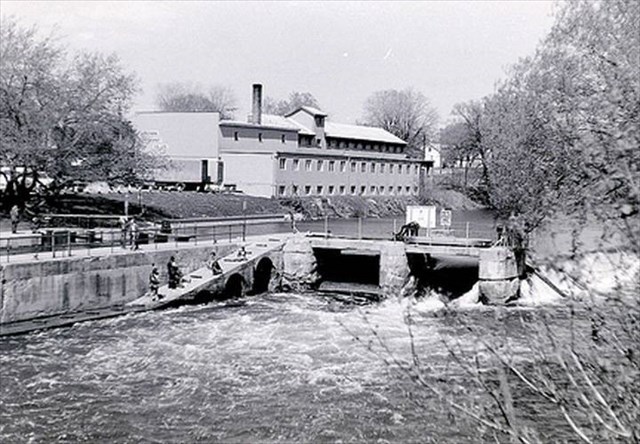
This is the Sisters of St. Joseph convent in Lindsay, Ontario, a stately old building that stood at 33 Russell Street East next to St. Mary’s church. It was built in 1874 for the Sisters of Loretto who were replaced by Sisters of St. Joseph in 1890.
In 1967, Ontario created twenty Colleges of Applied Arts and Technology with one of them being in Peterborough. A satellite forestry campus of Fleming College was created in Lindsay. As a new convent across Russell Street neared completion, arrangements were made to put the students and staff of the new campus into the old convent.
With a growing reputation for the college campus in Lindsay, word got around and the student body grew rapidly. The campus added programs in geology, heavy equipment, fish and wildlife, and cartography. It became a School of Natural Resources.
By 1977, the college had moved entirely out of the convent into new facilities. Shortly afterward, the church decided to tear down the old building.
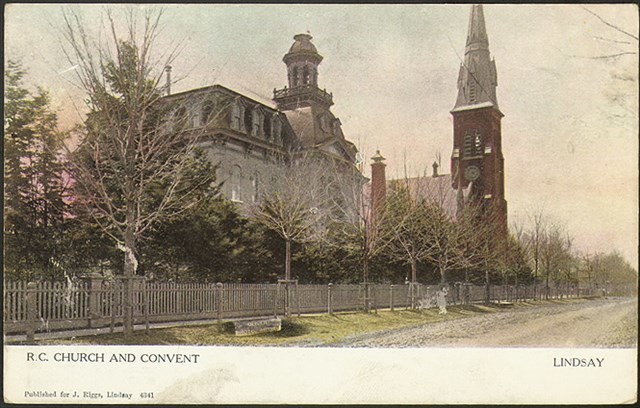
This picture, circa 1933, shows a woodpile behind the old Lindsay Town Hall, ready to be chopped up by transients in exchange for food. During the depression, there was a steady stream of unemployed men making their way through town by riding illegally on passing freight trains and lodging overnight in the police lockup. These “hobos,” or “transients,” would be offered a warm meal by private homeowners in exchange for some work: chopping firewood or cutting weeds, for instance. As I was scouting out this location, a firetruck was returning to the nearby station. One of the firefighters came over to ask me if I needed assistance. I showed him the picture and struck up a conversation. He added to the story by telling me that, in the firehall, they had washrooms and storage areas for the axes and tools. Workers could chop the wood for awhile and then come in to warm up before returning to their task. The workers would either be transients or people who had fallen foul of the law.
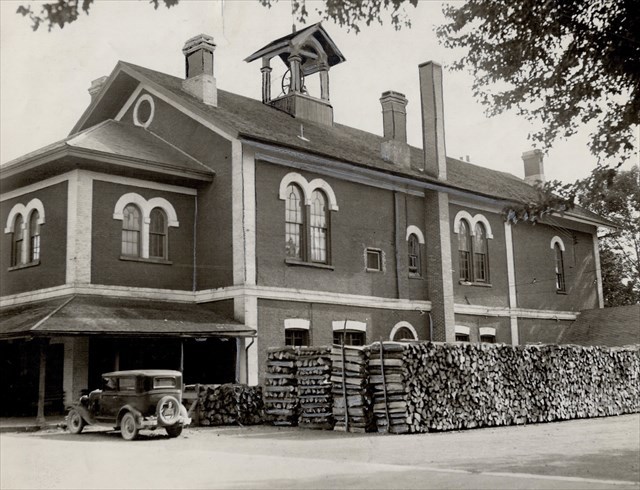
Originally, the corner depicted was known as the Baker Block, named for C. L. Baker who was one of the town's most prominent and well-respected businessmen and local builders. In 1874, Baker constructed the elegant three-storey building on the northeast corner of Kent and Cambridge streets where he opened the well-known and well-regarded C.L. Baker Store - a produce business that serviced the entire region. The building later became the home of the Baker Business College which trained young women for office and secretarial work. The building eventually became the home to the National Bank and then the Royal Bank. Today it is home to a coffee shop. If you go inside, notice the vault doors from the building's years as a bank.
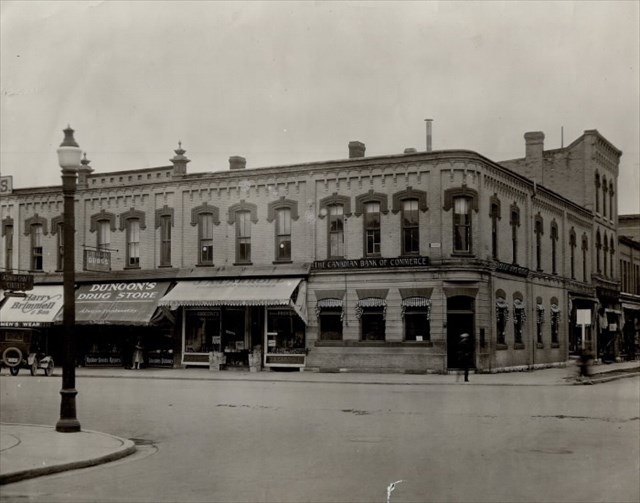
The first library in Lindsay was a reading room, established in May 1860 on the north side of Kent Street near York Street. This building would have been lost in the great fire of 1861.
Other reading rooms existed in Lindsay but in 1879 a meeting was held to establish the Lindsay Mechanics' Institute. In the following year, the Institute moved to the second floor of the old Dominion Bank (current TD Bank.) The Institute provided adult education for young men on technical subjects, and included evening lectures, lending libraries and reading rooms. Membership was $1 per year in 1894.
In 1893 a bylaw was passed to provide for the establishment of a Free Library in the Town of Lindsay. Two years later, the provincial government legislates that Mechanics' Institutes transform themselves into public libraries, and as a result the Institute's name changed to Lindsay Public Library. A vote taken in 1899 made the library free to citizens of the Town of Lindsay, acting under the authority of The Free Libraries Act, 1882.
Through a later grant of $13,500 from Andrew Carnegie, a new library was constructed for the 7000 citizens of the Town of Lindsay with the condition that the town would continue to provide funds every year for building maintenance. The library opened to the public in 1904.
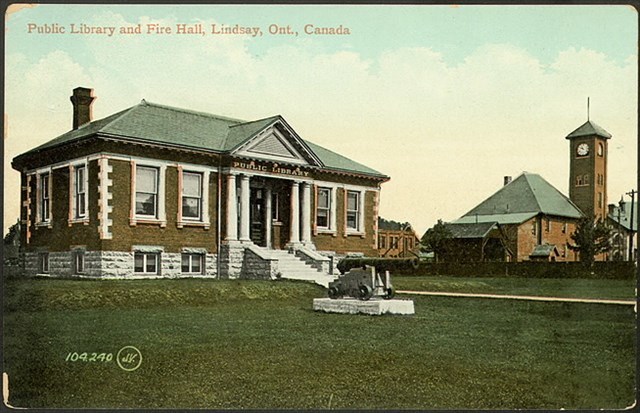
Logging requirements:
1. Visit each of the five locations where the pictures were taken.
2. Take your picture or a picture containing a unique object (showing your face is optional) in the location of the original photograph.
3. Post your pictures along with your found it log.
Alternately, you can email your pictures to lindsaythenandnow@gmail.com.
Please do NOT post generic pictures with your log entry.
Virtual Rewards 2.0 - 2019/2020
This Virtual Cache is part of a limited release of Virtuals created between June 4, 2019 and June 4, 2020. Only 4,000 cache owners were given the opportunity to hide a Virtual Cache. Learn more about Virtual Rewards 2.0 on the Geocaching Blog.